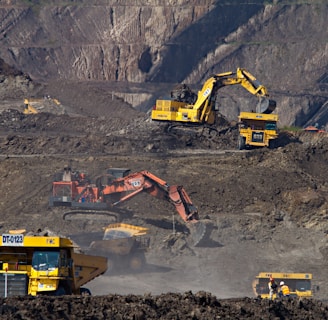China Unveils Action Plan to Slash Carbon Emissions
POLICYCN_POLICYCN_FOSSILFOSSIL


July 17, 2024 - China’s State Council recently unveiled an ambitious action plan to cut carbon emissions in 2024 and 2025, targeting significant reductions in fossil fuel consumption and a substantial increase in clean energy usage. The initiative aims to cut carbon dioxide emissions by approximately 130 million tons by the end of 2025.
This latest action plan underscores China's commitment to its “dual carbon” goals of reaching peak carbon emissions by 2030 and achieving carbon neutrality by 2060. It reflects the nation's resolve to pursue green development despite increasing protectionist measures from abroad targeting Chinese new-energy industries.
The plan sets out clear objectives to regulate total and intensity of energy consumption, curtail fossil fuel use, and enhance management of carbon emission intensity. It calls for special actions to promote energy conservation and carbon reduction across various sectors, establishing a strong foundation for future environmental milestones.
A key focus is increasing the share of non-fossil fuel energy consumption to about 18.9 percent in 2024 and 20 percent in 2025. Efforts to reduce carbon emissions in key industries are expected to cut approximately 130 million tons of carbon dioxide over the two-year period.
In the steel industry, the plan emphasizes reducing fossil-fuel energy consumption and banning new production capacity under the guise of other activities like machining and casting. Additionally, there are significant measures aimed at transforming the transportation sector, including promoting new-energy vehicles and upgrading infrastructure to support these changes.
The action plan also highlights China's strategic approach to balancing its reliance on coal while advancing its climate goals. The government plans to pilot projects using green ammonia and biomass in coal power plants and deploy carbon capture, utilization, and storage technologies. These projects aim to reduce carbon emissions by 20% per unit of electricity generated by 2024, with a further reduction target of 50% by 2027.
However, analysts have raised concerns about the financial viability and technological feasibility of these initiatives. "Biomass power plants in China are not financially viable without subsidies, largely due to inadequate fuel supply," said Shen Xinyi, analyst at the Centre for Research on Energy and Clean Air.
Despite these challenges, the Chinese government is encouraging local authorities to support and subsidize low-carbon projects, reaffirming its commitment to reducing carbon emissions while maintaining energy security and economic stability. The move comes amid rising protectionist measures from the US and the EU against Chinese electric vehicles, which Chinese officials criticize as counterproductive to global green development efforts.
Extended resources: https://www.globaltimes.cn/page/202405/1313282.shtml; https://www.reuters.com/world/china/china-plans-low-carbon-upgrades-coal-power-sector-2024-07-16/; and https://www.bnnbloomberg.ca/investing/commodities/2024/07/15/china-to-boost-funding-to-reduce-emissions-at-coal-power-plants/ .